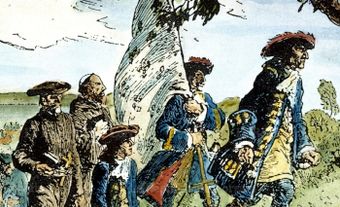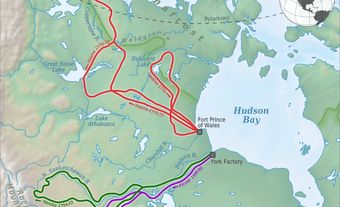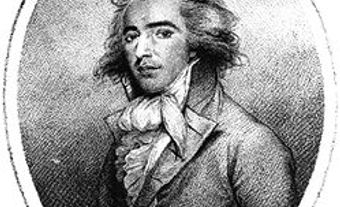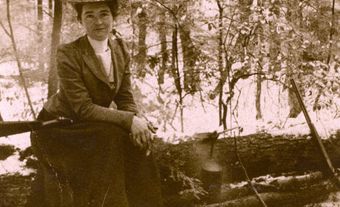Simon Fraser, explorer, fur trader (born 20 May 1776 in Mapletown, New York, United States; died 18 August 1862 in St Andrews West, Canada West). Simon Fraser is best known for his exploration of the Fraser River.

Early Life
Fraser was the youngest of 10 children of Simon Fraser of Culbokie and Guisachan (a cadet branch of the noble Highland Frasers of Lovat) and Isabel Grant of Daldreggan. In September 1773, his family joined the migration of Scottish Highlanders to America, settling in the rural hamlet of Mapletown. Fraser's father joined the Loyalist forces, was captured at the Battle of Bennington and died a prisoner in Albany Jail. Repeatedly harassed by rebels, even after peace was declared, Isabel Grant fled to Canada with her young family in 1784, eventually settling near Cornwall.
North West Company
Starting in 1790, Simon Fraser lived in Montreal with his uncle, Judge John Fraser, who supervised his nephew's education. In 1792, apprenticed him to the fur-trading North West Company. In 1793, Fraser was sent to Canada's far northwest to learn his trade at the isolated Athabascan posts. In 1801, Fraser was elected one of the company's youngest partners. In 1805, he was selected to expand the company's operations beyond the Rockies. He founded the first European settlements in central British Columbia, establishing Fort McLeod in 1805, Fort St James and Fort Fraser in 1806 and Fort George (present Prince George) in 1807. He called the area New Caledonia, as it reminded him of his mother’s descriptions of the Scottish Highlands.
Fraser River Expedition
Simon Fraser is best known for exploring the Fraser River (then believed to be the Columbia River). On 28 May 1808, hoping to discover a new transportation route to the Pacific, Fraser left Fort George with two clerks, 16 voyageurs and two Indigenous guides. The 832 km expedition was the most extensive exploration of the Fraser River by Europeans at the time, though the region has a rich Indigenous history. Most of the territory covered was unknown to Europeans at the time, and the expedition struggled through the perilous terrain of the Fraser River canyon. With Indigenous assistance, they survived the turbulent waters and cliff-side portages.
At the river's mouth, Fraser and his team realized that it could not be the Columbia River, at which point they retreated. David Thompson, who explored the actual Columbia River, named the Fraser River; Fraser had already named the Thompson River in Thompson’s honour.

Violent Competition
From 1810 to 1814, Fraser was in charge of the MacKenzie River Department. Though he endeavoured to retire, in 1816, Simon Fraser became embroiled in the Seven Oaks Incident. He was amongst the partners arrested by Lord Selkirk at Fort William and charged with complicity. The case was tried in 1818 — all were acquitted.
Later Life
Fraser immediately retired and settled at St Andrews West, where he farmed and operated mills. The rest of his life was uneventful except for participating in the 1837 Rebellion, during which he sustained a knee injury which left him disabled. In 1841, he began receiving a small government pension.
Simon Fraser died at the age of 86 on 18 August 1862, followed shortly by his wife, Catherine Fraser, who died the next day. Both were buried in a single grave in a Roman Catholic cemetery at St. Andrews West.
Legacy
In addition to the Fraser River, Simon Fraser University in British Columbia is named after Simon Fraser.

 Share on Facebook
Share on Facebook Share on X
Share on X Share by Email
Share by Email Share on Google Classroom
Share on Google Classroom



